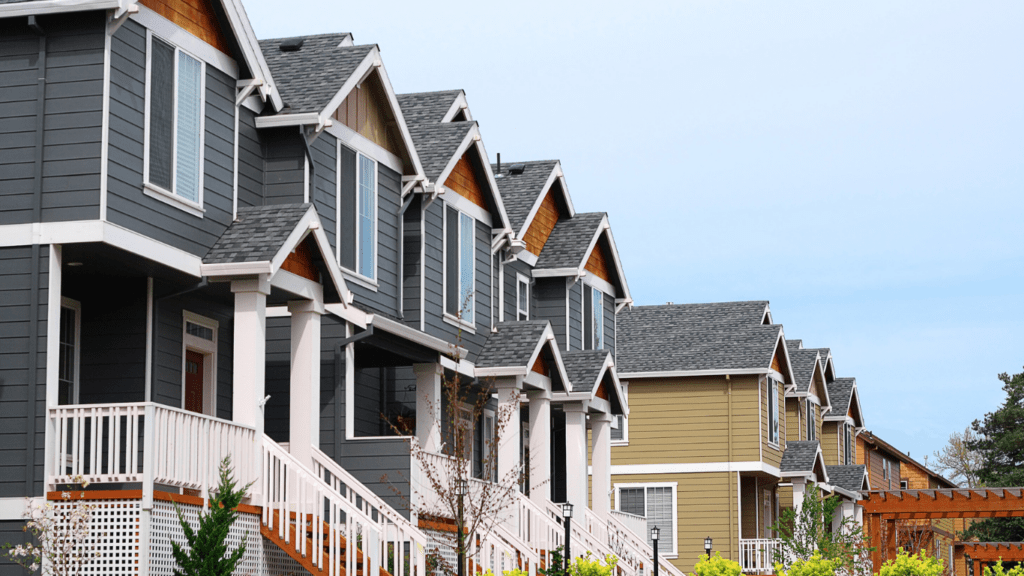The Rise Of Remote Work And Its Impact
Remote work has transformed how people perceive home and lifestyle priorities. Suburban real estate is adapting rapidly as this cultural shift influences living preferences.
The Shift Towards Remote Work Culture
Remote work has grown exponentially, with a 44% increase in remote jobs between 2018 and 2022, according to Gallup data. Digital connectivity and flexible work policies are driving this trend. Employers are adopting hybrid and fully remote models, enabling professionals to move away from urban centers. This decentralization has caused many to:
- prioritize affordability
- larger living spaces
- proximity to nature
making suburban regions more desirable.
Evolving Needs Of Remote Workers
Homebuyers now demand features that accommodate a work-from-home lifestyle. Dedicated home offices, improved internet infrastructure, and multifunctional spaces are common requests. Outdoor amenities like patios and gardens are also gaining traction as remote workers seek tranquility and personal well-being. Builders and real estate developers are rethinking layouts to align with these preferences, paving the way for homes designed around remote work needs.
Suburban Real Estate Trends

Remote work has redefined suburban real estate, driving shifts in purchasing patterns and home expectations. Suburban areas are adapting to meet the demands of buyers prioritizing space, functionality, and community-oriented living.
Increased Demand For Suburban Homes
Demand for suburban homes has soared due to preferences for affordability and space. U.S. Census data showed suburban counties experienced higher population growth rates than urban areas from 2020 to 2022. Families and professionals are leaving densely packed urban environments for quiet neighborhoods and homes offering larger square footage, yards, and proximity to schools or parks. Examples include suburbs around major cities like Austin, Nashville, and Raleigh, which have become popular due to their quality of life and cost advantages.
Real estate markets in these areas have seen increased competition, with house prices rising by over 10% in some suburbs since 2021. Buyers prioritizing these locations value lower property taxes, safety, and the ability to access nature, qualities often absent in urban settings.
Renovation And Home Office Spaces
Renovation trends emphasize creating functional home offices and additional workspaces. More than 30% of homeowners undertook renovations specifically to build or enhance home offices in 2023, according to a Houzz survey. Features like soundproofing, built-in desks, and ample natural lighting have become key.
Flex rooms, once used as guest rooms or gyms, are being updated to support professional remote setups. High-speed internet upgrades are also sought, especially in areas where rural internet infrastructure lags. Suburban properties are increasingly marketed for their adaptability to remote work lifestyles, which appeals to buyers seeking homes ready for modern, hybrid living.
Economic Implications On Suburban Areas
Remote work is driving notable economic shifts in suburban regions. Suburban housing markets and local economies are adapting to meet the changing demands of remote workers and their families.
Rising Property Values
- Property values in suburban areas are climbing due to increased demand.
- Popular suburban markets near urban hubs like Denver and Charlotte have seen home prices grow by 12%-15% since 2021.
- Buyers are competing for limited inventory, especially for properties with large yards, extra bedrooms, and modern workspaces.
- Real estate investors are also targeting these regions for rental opportunities, further tightening supply and pushing prices higher.
- As affordability becomes a challenge, smaller towns adjacent to major suburbs are experiencing spillover effects, contributing to regional economic growth.
Impact On Local Businesses
Suburban businesses are evolving to accommodate the influx of remote workers. Cafes, coworking spaces, and fitness centers are expanding to cater to professionals seeking social engagement and work-life balance. Spending on local services and goods has increased, supporting small businesses like grocery stores, childcare providers, and home improvement services. Additionally, remote workers’ presence has encouraged municipalities to invest in infrastructure upgrades, such as fiber-optic internet and improved transit, enhancing overall economic development in suburban areas.
Challenges And Opportunities For Real Estate Developers
Remote work trends are reshaping the strategies of real estate developers, presenting both challenges and opportunities. To meet the evolving needs of homebuyers, developers must adjust designs and community planning.
Adapting To Changing Demands
Changing homebuyer priorities demand flexible, thoughtful development strategies. Families now seek larger homes with home offices, high-speed internet, and energy-efficient designs. Without addressing these needs, developers risk stagnating sales. Builders are reevaluating layouts to prioritize remote-friendly features like separate work areas, multiuse spaces, and expanded outdoor amenities like patios or green spaces.
Location preferences are shifting towards suburban towns with lower-density living. Developments in areas lacking robust infrastructure face challenges meeting demand. For example, regions without reliable broadband risk alienating prospective buyers. Developers investing in partnerships for internet expansion or nearby coworking facilities can build competitive advantages.
Innovations In Suburban Development
Innovative planning incorporates hybrid living models to attract remote professionals and families. Mixed-use developments combining residential, retail, and commercial spaces are rising in popularity. These communities balance work and leisure, offering amenities such as coworking lounges, high-end fitness centers, and entertainment venues.
Building smart homes has become a priority. Features like automated lighting, smart thermostats, and enhanced network connectivity are increasingly essential. By integrating environmentally sustainable materials and renewable energy systems such as solar panels, developers capitalize on trends toward eco-conscious living.
Developers aligning projects with these shifts, while overcoming infrastructure hurdles, gain opportunities to redefine suburban living.





